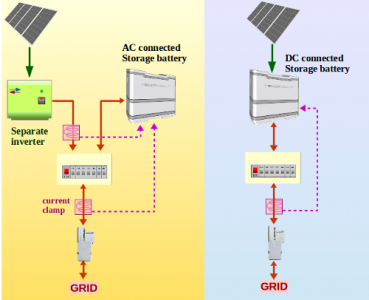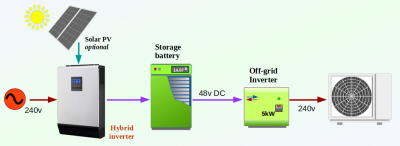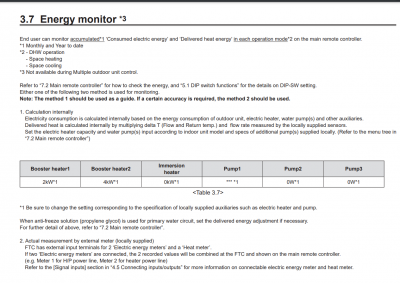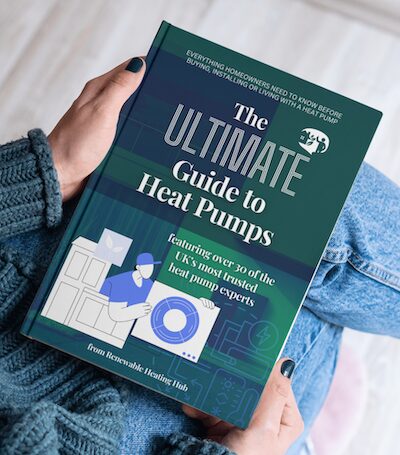Questions about Ecodan cascade system
Hi All
Really glad to have found this forum and looking forward to getting to understand my newly installed ASHP system a bit better.
We live in a 281 m2 house with fair cavity wall and loft insulation / double glazing, except that a half of it is over a poorly insulated garage or concrete floors and not sure about the insulation to that. The two different surveys came up with heat loss calculations of 16.5 KW.
In December 2022 we had a Mitsubishi Ecodan 2x 11.2 KW ASHP system with FTC cascade controllers installed and the Mistubishi room controller. At the recommendation of the charming (if optimistic) sales rep we have not yet changed the radiators. His view was "Try it out and then decide which ones you really want to upgrade". 6 KW of solar panels are due in the new year.
This was switched on the day it started to get a bit cold here in Cheshire (-8 C at night) and the first couple of days the power consumption scared the living daylights out of me. I have calmed down now it has warmed up a bit. So far we are comfortable with the room temperatures but there are a couple of snags that really need to be resolved.
I have a long list of questions about the Ecodan cascade system!
1) Is there a really good technical manual for this system anywhere. The system seems to be really smart and doing all sorts of clever control stuff (eg running at low power as it approaches set point) but then does strange things like continue to run when it goes over the set point? It would be really good to have a proper guide. The Mitsubishi manuals guide you though the controller screens but don't really tell you what they do.
2) This system has electricity consumption meters (the scary ones) but they don't seem to be talking to the Melcloud system and there doesnt seem to be an "energy output" meter. I thought there was supposed to be? I am keen to get a real view of the COP. any ideas about this?
3) How do I know if the weather compensation stuff is working?
etc etc.
I am going to stop there. Looking forward to chatting guys.
Tom McL
Hi @tommcl and welcome to the forum.
There are others here who can address the Ecodan questions better than I.
But I'm intrigued as to the 6kW of solar panels which are yet to be installed.
In non-technical terms, could you say whether they form part of the energy-assessment on which the ASHP system was specified, and what you expect that energy will be used for when the sun shines?
Save energy... recycle electrons!
Posted by: @tommclHi All
Really glad to have found this forum and looking forward to getting to understand my newly installed ASHP system a bit better.
We live in a 281 m2 house with fair cavity wall and loft insulation / double glazing, except that a half of it is over a poorly insulated garage or concrete floors and not sure about the insulation to that. The two different surveys came up with heat loss calculations of 16.5 KW.
In December 2022 we had a Mitsubishi Ecodan 2x 11.2 KW ASHP system with FTC cascade controllers installed and the Mistubishi room controller. At the recommendation of the charming (if optimistic) sales rep we have not yet changed the radiators. His view was "Try it out and then decide which ones you really want to upgrade". 6 KW of solar panels are due in the new year.
This was switched on the day it started to get a bit cold here in Cheshire (-8 C at night) and the first couple of days the power consumption scared the living daylights out of me. I have calmed down now it has warmed up a bit. So far we are comfortable with the room temperatures but there are a couple of snags that really need to be resolved.
I have a long list of questions about the Ecodan cascade system!
1) Is there a really good technical manual for this system anywhere. The system seems to be really smart and doing all sorts of clever control stuff (eg running at low power as it approaches set point) but then does strange things like continue to run when it goes over the set point? It would be really good to have a proper guide. The Mitsubishi manuals guide you though the controller screens but don't really tell you what they do.
2) This system has electricity consumption meters (the scary ones) but they don't seem to be talking to the Melcloud system and there doesnt seem to be an "energy output" meter. I thought there was supposed to be? I am keen to get a real view of the COP. any ideas about this?
3) How do I know if the weather compensation stuff is working?
etc etc.
I am going to stop there. Looking forward to chatting guys.
Tom McL
Hi Tom,
Welcome to the forum. If you would care to detail what controls you have on your system, and where they are located within your home, we will try to help answer your questions.
I have posted below a copy of the detailed manufacturer's manual supplied by Kev, which may provide some answers, but please feel free to ask for clarification.
@transparent Thanks Transparent. The idea of the Solar PV is that we will eventually have an EV to charge ( just waiting for my 12 year old totally reliable Prius to die, but that might take a while). The optimistic sales rep suggested that we hold off buying a battery for the PV, even though he could have sold me one on the spot, as using the EV as a storage device for the PV might be a better option. Really I would like to store the PV output during the day and use it for the ASHP in the evening. Is there a thread on this in RHH?
@derek-m Wow Thanks Derek That is indeed a comprehensive manual. I will dig through and see if I can find the relevant parts for the cascade system.
The control system we have is:-
2x 11.2 KW Ecodan ASHP placed 2m outside the utility room, and the control and pumping manifold beside the Joule water cylinder in the utility room.
Ecodan cascade Flow Temperature Control system set up as a master and two sub units. (see page C49 in the manual)
These are controlled by a Mitsubishi hardwired remote controller beside the FTCs and Mitsubishi wireless remote controller in the living room.
On the pipework to the ASHPs there are Mitsubishi Flow meters and Thermistors on the flow and return pipes. Also thermistors on the central heating pipes.
Power consumption of the heat pumps is indicated by two Emlite ECA2.v meters beside the consumer unit (in the garage just through a wall behind the utility room.) . It is not clear to me if these feed data to the Ecodan FTC at all.
Hope this is enough to clarify.
Thanks for your help.
TomMcL
Posted by: @tommcl...sales rep suggested that we hold off buying a battery for the PV, even though he could have sold me one on the spot, as using the EV as a storage device for the PV might be a better option. Really I would like to store the PV output during the day and use it for the ASHP in the evening. Is there a thread on this in RHH?
Yes @tommcl - there are several topics in which such strategies are discussed.
Battery storage is one of my own areas of expertise.
That doesn't mean I have a stunning and efficient system in my own house... far from it!
I've just spent 2-years on a storage trial jointly operated by OVO Energy and PowerVault which showed me all manner of ways not to implement storage!
Broadly speaking you should recognise two different approaches to use self-generated PV energy for operating a heat pump:
1: The heat pump is fed from the 240v mains power in your house.
Your PV panels either feed to the storage battery via an AC Inverter, or possibly via a direct DC-input.
You are not permitted to feed more than 3.68kW onto the mains.
But if the panels are DC-connected to the storage battery, then it controls that limit.
You could still have all 6kW of solar panels in use on a sunny day.
2: The heat-pump is supplied from the storage battery using a 240v AC output which is independent of the mains grid.
The battery can be re-charged from both solar and the grid, but it will never export electricity back to the grid
You can use as many solar panels as you wish, and the heat-pump will obviously continue to operate during a power-outage.
Option 1 (above) requires permission from your regional Distribution Network Operator (DNO).
It must be installed by a qualified electrician.
If you wish to receive payment for any power which is exported from the house, then that installer must be MCS Accredited.
Equally, all of the equipment must be MCS-approved.
Option 2 does not require DNO consent because it will never export to the grid.
You still require a qualified electrician to make connections above 125v AC.
But you can choose to buy and install the battery cells on a DIY basis.
Are these distinctions clear enough?
Once you know the direction in which you'd like to head, I can guide you towards the relevant topics elsewhere on the forum.
Save energy... recycle electrons!
Thanks Transparent. And if I were to include an EV in the mix would I just add the EV connection in parallel to the battery?
No @tommcl I'm afraid it's not that simple, although your idea is commendable for making best use of the available energy.
The battery in an EV differs from those we use within a static storage unit in a number of respects:
- It will typically be rated at 200-400v ish. EV batteries can kill if you approach them with a can-opener.
- The chemistry is different. EV cells are usually LiNMC (Lithium; Nickel Manganese Cobalt) for their mass/capacity ratio. In home cells are commonly LiFePO4
- The car has a mains input connector (CSS or CHAdeMO) operating at 240v AC
- The battery capacity in an EV is huge (50kWh+) compared with in-home storage
In short, you would always charge an EV from a 240v AC supply. It's unlikely to be viable to take stored charge from your in-house battery storage and then transfer it to your car. Each power-conversion decreases the overall efficiency.
There is a technology called V2G (Vehicle to Grid) by which the electricity within the EV can be sent back into the house using a special V2G Smart Charger.
Currently this has only been achieved commercially with Nissan EVs with a CHAdeMO connector. Just over 400 Nissan Leaf owners were supplied with a V2G charger designed and made by Indra Renewable Technologies. Indra is part of the OVO Group of companies.
The OVO/Nissan V2G Trial was largely beneficial to the energy demands of the UK as a whole because it heavily reduced demand on the grid from those households during the early evening peak.
However, OVO couldn't test it with a Time-of-Use tariff because their billing software couldn't offer that at the time. A real test would need to evaluate how EV owners responded to the different price-points by using electricity from their car rather than from the grid.
Save energy... recycle electrons!
@tommcl hi there, I've got the same set up as you 2x 11.2's in cascade. I also have the energy monitors on my consumer unit showing the kWh used by each pump. However my installers are saying there is no way to monitor the energy produced by the pumps (and therefore the efficiency). I find this hard to believe....did you find a way? thanks
@reggie1978 I have a wild guess that's because the controller might be the one than doesn't deal well with two at the same time.
Your only solution is external heat meters and power meters individually measuring the output of each HP.
Talk to them https://community.openenergymonitor.org/
- 26 Forums
- 2,342 Topics
- 53 K Posts
- 242 Online
- 6,000 Members
Join Us!
Worth Watching
Latest Posts
-

Totally agree. The problem lies with what I was once ...
By Majordennisbloodnok , 11 minutes ago
-

@majordennisbloodnok I have decided to take the plunge....
By TechnoGeek , 47 minutes ago
-

RE: LiFePO4 lithium battery fires and explosions
I too had spotted the Na-ion battery and matching inver...
By Transparent , 2 hours ago
-
RE: Help with heat pump sizing
Unfortunately you will almost certainly need to go a la...
By JamesPa , 2 hours ago
-
RE: Poll for Time of Use, tariffs, technology
You are absolutely right. I think another common fac...
By JamesPa , 5 hours ago
-
RE: Are We Sleepwalking Into Another Race to the Bottom?
Let' start with first thing first, HG is a startup, the...
By ksim , 6 hours ago
-
RE: Configuring third party dongle for Ecodan local control
@sheriff-fatman might be interested in this, f...
By F1p , 6 hours ago
-
RE: Commencing on an ASHP Installation Process
Fair play for giving this a go, and please do report ba...
By benson , 8 hours ago
-
RE: Different dT on each radiator?
I cant sorry. Its based on some calculations I did fro...
By JamesPa , 19 hours ago
-
RE: Setback savings - fact or fiction?
Maybe this: or maybe that the effect you are seein...
By JamesPa , 20 hours ago
-
RE: Help me keep the faith with my air source heat pump installation
@simonf thats interesting as I’ve noticed my flow and r...
By AdamK , 1 day ago
-

RE: MELcloud scheduling misbehaviour
No, it gets to set temperature easily even during perio...
By Abernyte , 1 day ago
-
RE: Free Ecoheat Heat Pump Install
Sorry hit 'add reply' too early, this forum layout will...
By Deltona , 1 day ago
-
And arguably even more important, sodium will be hopefu...
By Batpred , 1 day ago
-
RE: A Smarter Smart Controller from Homely?
I've been thinking of emailing Homely to ask for a few ...
By JohnnyB , 2 days ago
-
Max output of Heat pump (Daikin 4Kw EDLA04)
Hello, I am a bit puzzled that according to pcdb tes...
By GeorgeA , 2 days ago
-

RE: Has Anyone Else Noticed a Decline in Tradesmanship?
@cathoderay Hence my rider about ‘all else being equal’...
By Toodles , 2 days ago
-
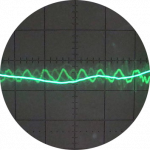
RE: Heat Pump Performance Analysis Web App using Modbus Data
@redzer_irl — all my heat pump data is in csv files, me...
By cathodeRay , 2 days ago


